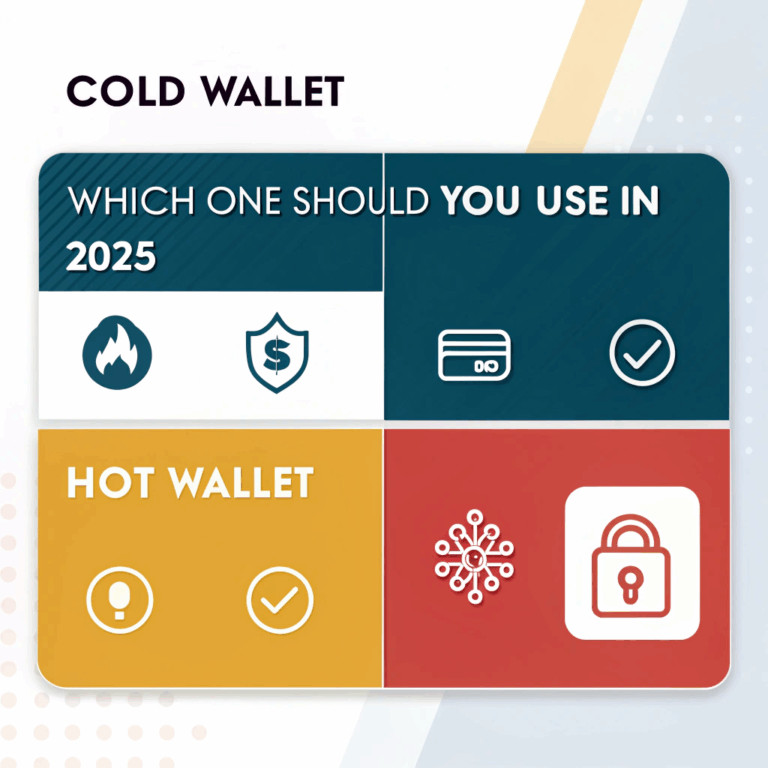What Are Crypto Tokens vs Coins? Key Differences Explained (2025 Guide)

Introduction
In the crypto world, you’ll often hear people say “coin” or “token” — but they’re not the same thing. In 2025, understanding the difference between coins and tokens is essential whether you’re investing, trading, or using decentralized apps. Here’s a simple breakdown.
What Is a Coin in Crypto?
A coin is a cryptocurrency that operates on its own blockchain.
Coins are the native currency of a blockchain network. They’re used to:
- Pay gas fees
- Transfer value
- Secure the network (via staking or mining)
Examples of coins:
- Bitcoin (BTC)
- Ethereum (ETH)
- Solana (SOL)
- Avalanche (AVAX)
- Litecoin (LTC)
What Is a Token in Crypto?
A token is a cryptocurrency that’s built on top of another blockchain.
Tokens use the blockchain’s infrastructure and are usually created using smart contracts.
They’re used for:
- Governance
- Accessing DeFi apps
- Utility in ecosystems (games, NFTs, etc.)
Examples of tokens:
- USDT (on Ethereum and others)
- UNI (Uniswap)
- AAVE
- MATIC (originally a token before becoming a coin)
Key Differences Between Coins and Tokens
| Feature | Coin | Token |
|---|---|---|
| Blockchain | Has its own native blockchain | Built on another blockchain |
| Use Case | Transfer value, pay gas | Varies (DeFi, utility, governance) |
| Examples | BTC, ETH, SOL | LINK, USDC, UNI, SHIB |
| Creation | Built into the chain (protocol level) | Created via smart contracts |
| Fees Paid With | Native coin (e.g., ETH) | Paid with the host chain’s coin |
Why the Distinction Matters
- Coins are needed for network operations (staking, gas)
- Tokens are essential for ecosystem interactions (voting, DeFi, NFTs)
- Investors need to understand whether they’re buying a native asset or a dependent one
- Coins tend to have more security, while tokens can be deployed faster but may carry more risk
Real Examples of Coins
| Coin | Blockchain | Use Case |
|---|---|---|
| BTC | Bitcoin | Store of value, payments |
| ETH | Ethereum | Gas for dApps, staking |
| SOL | Solana | Network fees, governance |
| ADA | Cardano | Staking, transaction fees |
| AVAX | Avalanche | Subnet creation, staking |
Real Examples of Tokens
| Token | Host Chain | Purpose |
|---|---|---|
| USDC | Ethereum, others | Stablecoin pegged to USD |
| UNI | Ethereum | Uniswap governance |
| AAVE | Ethereum | Lending/borrowing in DeFi |
| MANA | Ethereum | In-game currency (Decentraland) |
| SAND | Ethereum | Gaming/metaverse utility |
Token Standards (ERC-20, BEP-20, etc.)
Tokens follow standards to ensure compatibility with wallets and dApps.
| Standard | Blockchain | Use Case |
|---|---|---|
| ERC-20 | Ethereum | Most fungible tokens |
| ERC-721 | Ethereum | NFTs (non-fungible tokens) |
| BEP-20 | BNB Chain | Similar to ERC-20 |
| SPL | Solana | Tokens on Solana |
| CW20 | Cosmos (CosmWasm) | Tokens on Cosmos apps |
How Coins and Tokens Are Used
Coins
- Pay gas fees
- Reward validators
- Peer-to-peer transactions
- Store of value
Tokens
- Enable DeFi functionality
- Represent assets (e.g., stablecoins)
- In-game currencies
- Voting and DAO participation
- NFT ownership
Can Tokens Become Coins?
Yes. Some tokens start on another chain, then launch their own blockchain later.
Examples:
- MATIC → originally an ERC-20 token → now Polygon (layer 2)
- BNB → started on Ethereum → now runs on BNB Chain
This is often part of a project’s long-term roadmap.
FAQ
Can a token exist on multiple chains?
Yes. For example, USDT exists on Ethereum, Tron, BNB Chain, and more.
Is ETH a token or a coin?
ETH is a coin — it powers the Ethereum blockchain.
Which is safer to invest in: coins or tokens?
Depends on the project, but coins tend to have more infrastructure-level support.
Can I send a token directly to another wallet?
Yes — just make sure it’s on the correct network (e.g., ERC-20 on Ethereum).
Conclusion
Coins and tokens may seem similar, but their roles in crypto are very different. Coins are the backbone of blockchains, while tokens add layers of functionality on top. As crypto continues to evolve in 2025, understanding this difference will help you navigate investments, DeFi, and Web3 with confidence.





